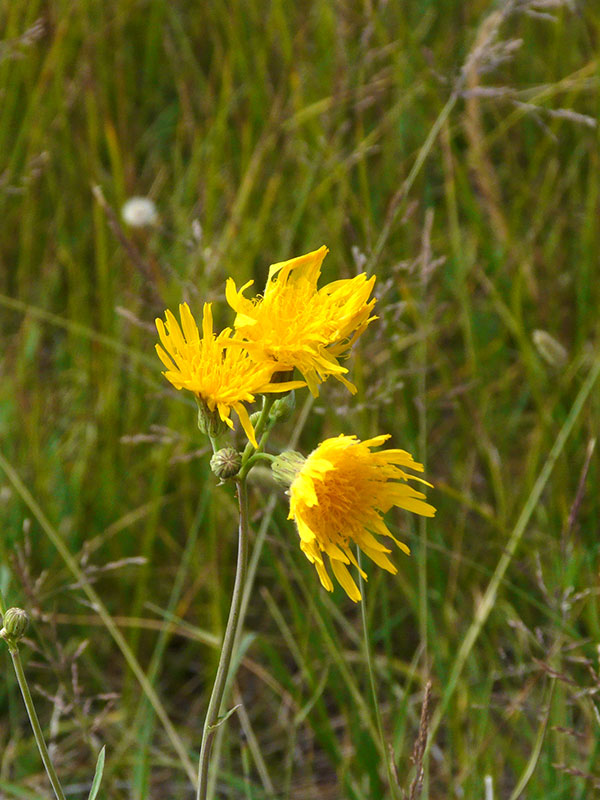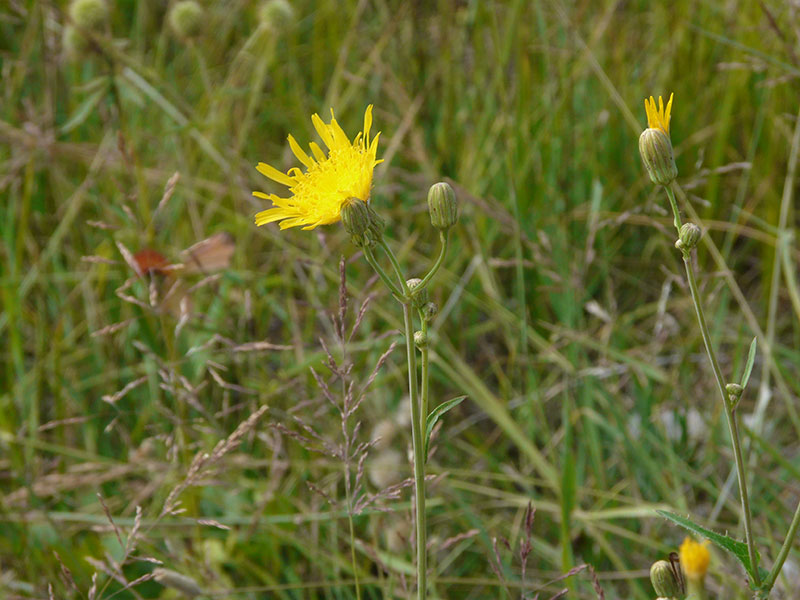Sonchus arvensis / field sowthistle
- yellow dandelion-like
- multiple flowers per stalk
- often in patches in wet fields
- leaves spiney but without lobes, clasping the stems
- often several stems from a single point at the soil level
Also known as: perennial sowthistle, field milk thistle, perennial sow-thistle, corn sow thistle, dindle, gutweed, swine thistle, tree sow thistle
See also: Taraxacum officinale / dandelion
This species has a pretty, yellow “dandelion-like” flower ( inflorescence) but is clearly not a dandelion because individual flowering stalks are tall and generally have several flowers on separate branches, some long, some short. Otherwise, the flowers open only in the morning, about 2-3 hours after sunrise, and close about noon. The flower buds are rounded, not pointed like salsify.
Field sowthistle leaves have spiney edges, sort of like prickly lettuce. The leaves are not lobed, a characteristic that distinguishes this species from the other sowthistles in Idaho.
The field sowthistle habitat is also “diagnostic”… it grows well in wet and even saturated soils so it can be found in riparian areas or wetlands. It is not limited there, however, but grows in disturbed areas generally.
Field sowthistle is a perennial, reproducing vegetatively from deep taproots and rhizomes as well as from budding from stems at the soil line. One plant will typically have 2 to many stems per plant with the leaves crowded on the lower stems. It is also a copious seed producer but only if visited by a pollinator, i.e. it is generally self-incompatible. The fruits are dandelion-like achenes with a feathery pappus for wind dispersal. Germination occurs soon after flowering and dispersal, but in some cases, seeds apparently may remain viable for a few years.
Like the other composites in the “lettuce” or “chicory” tribe, the stems of field sowthistle are hollow and filled with a milky latex.
S. arvensis, like all the other Sonchus spp. in the US, is non-native. In Idaho, it is on the noxious weeds “control” list.
| Color | |
|---|---|
| Family | |
| Blossom size | |
| Inflorescence size | |
| Inflorescence type | |
| When? | |
| Where? |



